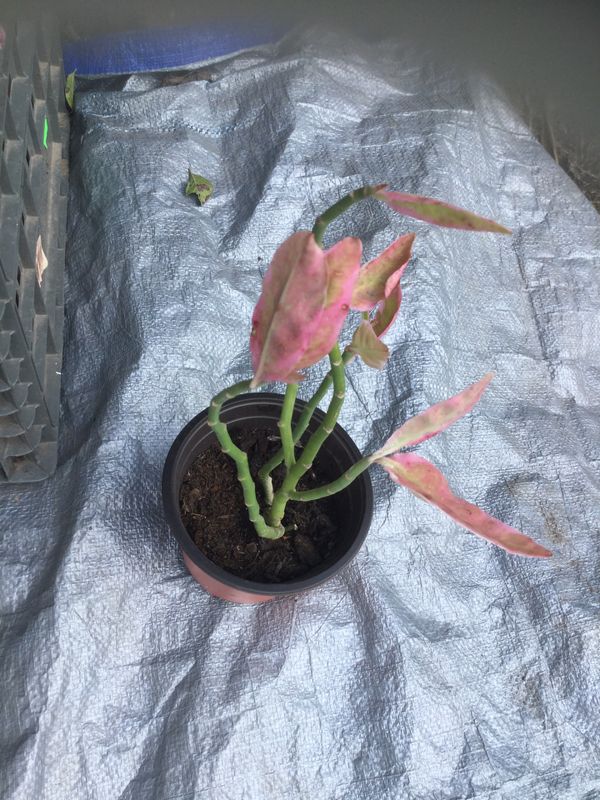
So be sure to read up on your plant before you do any cutting. Some plants will need specific nodes included in the cutting in order to form roots. How many stems you should take and how many leaves they should have on them will vary from plant to plant. I’ve also included in this section the plants that you propagate by cutting the tip-off of since the idea is pretty much identical. The stems arch slightly and may zig-zag between leaf nodes. This is by far the most common way to propagate plants from cuttings. successful field identification, propagation, and care of the plant species selected for.

Cut off a piece of the stem of the plant with leaves on it then put it in either soil or water and watch the roots grow. Stem cutting is exactly what it sounds like. Take a fresh cutting and let it callus on the counter for a few days. You just need a piece of stem to start an entirely new plant. The names refer to the alternate pattern of the leaves along a central spine that resembles a fish skeleton.
Zigzag plant clipping skin#
Wear garden gloves when pruning or transplanting to avoid possible skin irritation.Growing from cuttings is not only cost-effective, but it's also beautiful too. Ric Rac, Zigzag and Fishbone orchid cactus are just a few of these descriptive monikers. Devils backbone holds up to dry conditions well, so itll survive if you forget to water it every now and again (or cant. If you have a bright spot, its a wonderfully easy-to-grow houseplant, purifying the air and adding a dose of drama to indoor decor. Take care to locate the plant where it won’t be in contact with children and pets. Despite its common name, devils backbackbone (also called zigzag plant) is a joy to grow. Parts of this plant contain a milky sap that can irritate skin and may be harmful if eaten. While moist soil is preferred, pots should have drainage holes so the roots do not become over saturated and sit in water for extended periods of time. Other common names: Slipper flower, lady’s slipper. Botanical name: Pedilanthus tithymaloides. slipper plant, slipper spurge, timora misha, and zig-zag plant. Warning: For all eye exposures rinse the eye with water for 15 minutes. It prefers sandy soil that is well-drained and nutrient-rich so any cactus or succulent mixes work well. An erect shrub, the plant is also known by the scientific name Pedilanthus tithymaloides. Similarly, they can tolerate low water (or even extended periods without) but will have more vigorous growth with regular watering.
Zigzag plant clipping full#
While devil’s backbone will grow in low light conditions, they will often get leggy and reach towards a light source, so generally speaking full to mostly sun conditions are best. Growing Instructions: Full sun, moderate water Their branches are (3-) 4- to 5-angled, little. pseudocactus miniature form: Seedlings of the miniature form sometimes appears among normal seedlings of this species. grandicornis, but a much smaller and more manageable size. Other Names: Zigzag plant, Pedilanthus tithymaloides pseudocactus Zig Zag form: (sometimes called a Zig-Zag plant): far more popular, it is similar in form to E.

Height: 18 to 24 inches (46 to 61 cm) up to 6 to 8 feet (1.8 to 2.4 m) In the Propagation Method column, numbers in bold. Origination: tropical, subtropical North and Centeral America Additional informa- tion is available for these plant species, but this chart should provide a starting point. While devils backbone grows best with sunny locations with regular watering, it can also tolerate some shade and periods without water. Gaining it’s common name from the unusual segmented stem that grows back and forth, Devil’s Backbone also happens to be easy to grow. With zig-zaggy stems that grow upwards and variegated foliage with a little pink blush Devil’s Backbone makes an attractive houseplant, or is perfect for sprucing up outdoor locations in the warmer zones. Scientific Name: Euphorbia tyithymaloides variegatus Devil’s Backbone, Euphorbia tyithymaloides variegatus, 4in Potted Plant, Succulent Plants, Euphorbiaceae


 0 kommentar(er)
0 kommentar(er)
